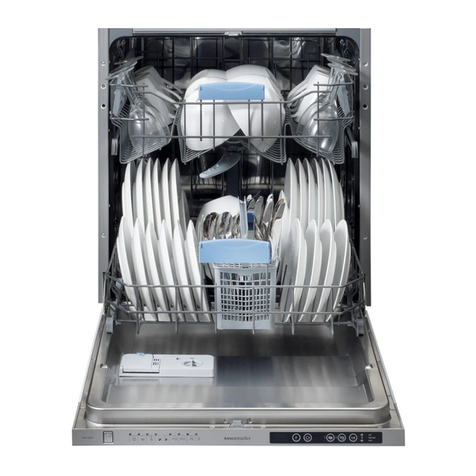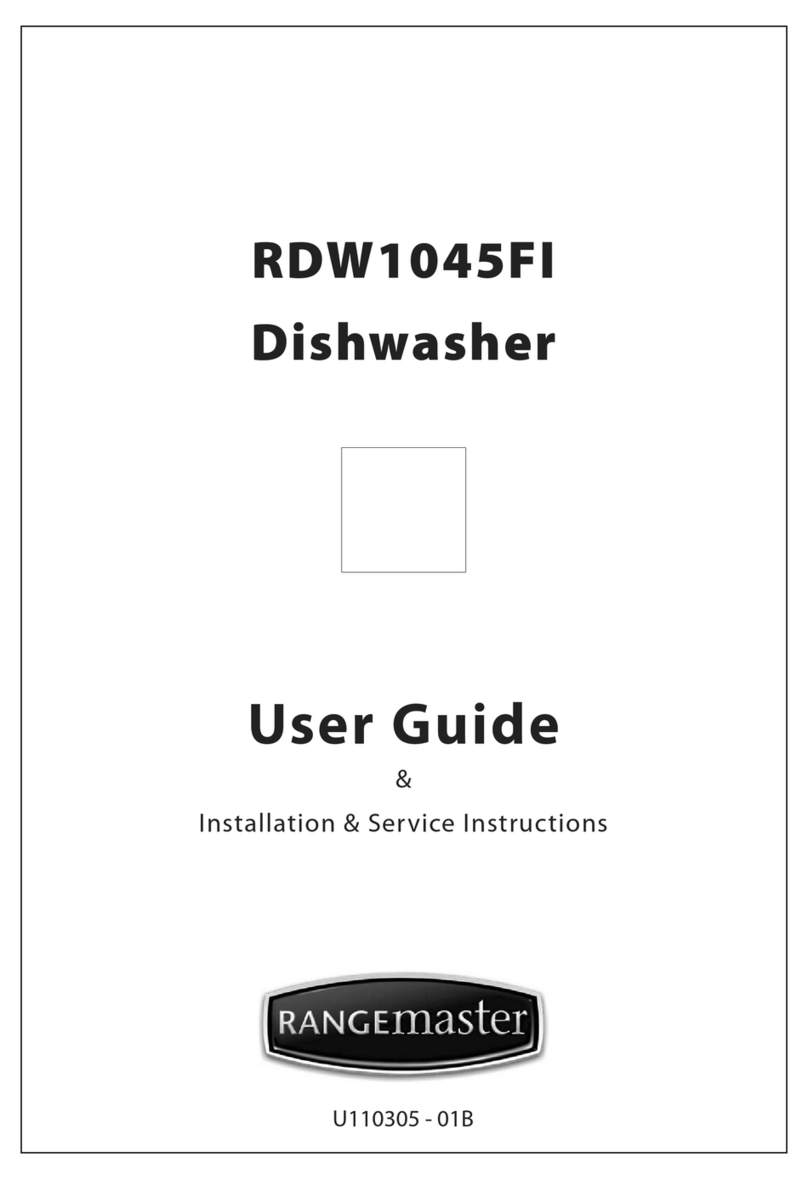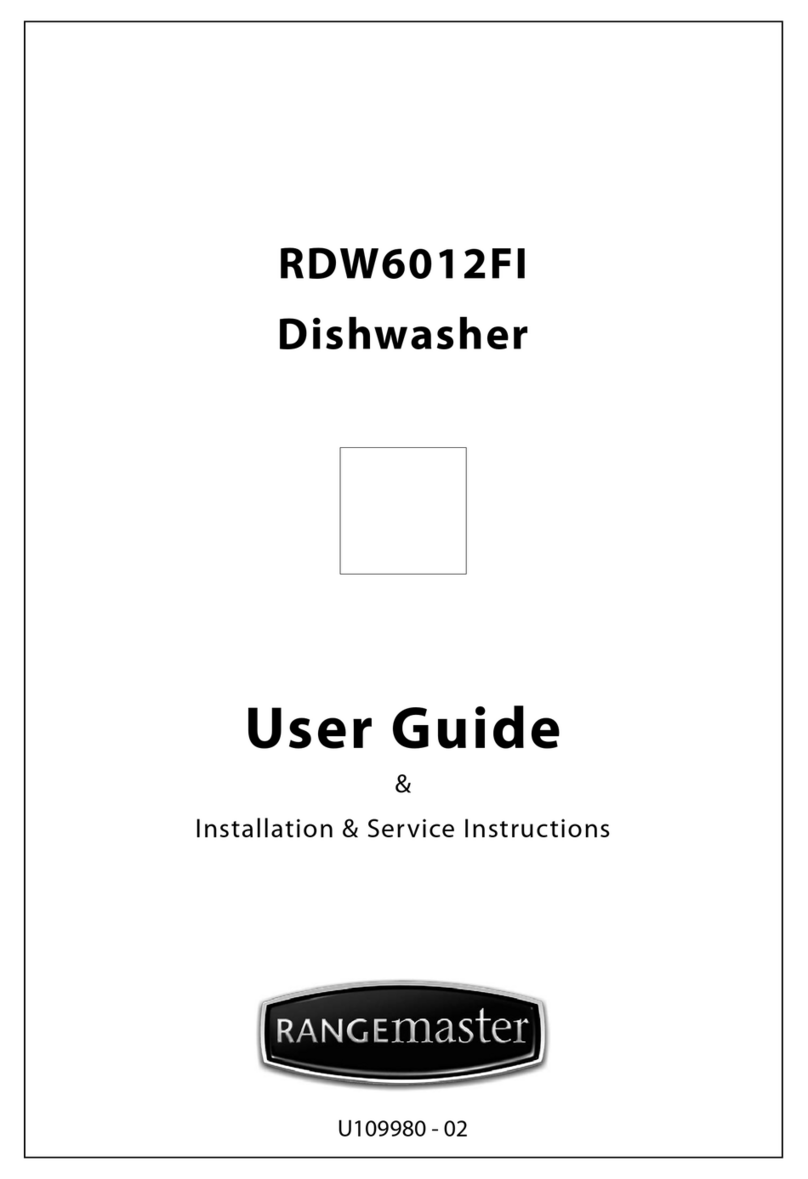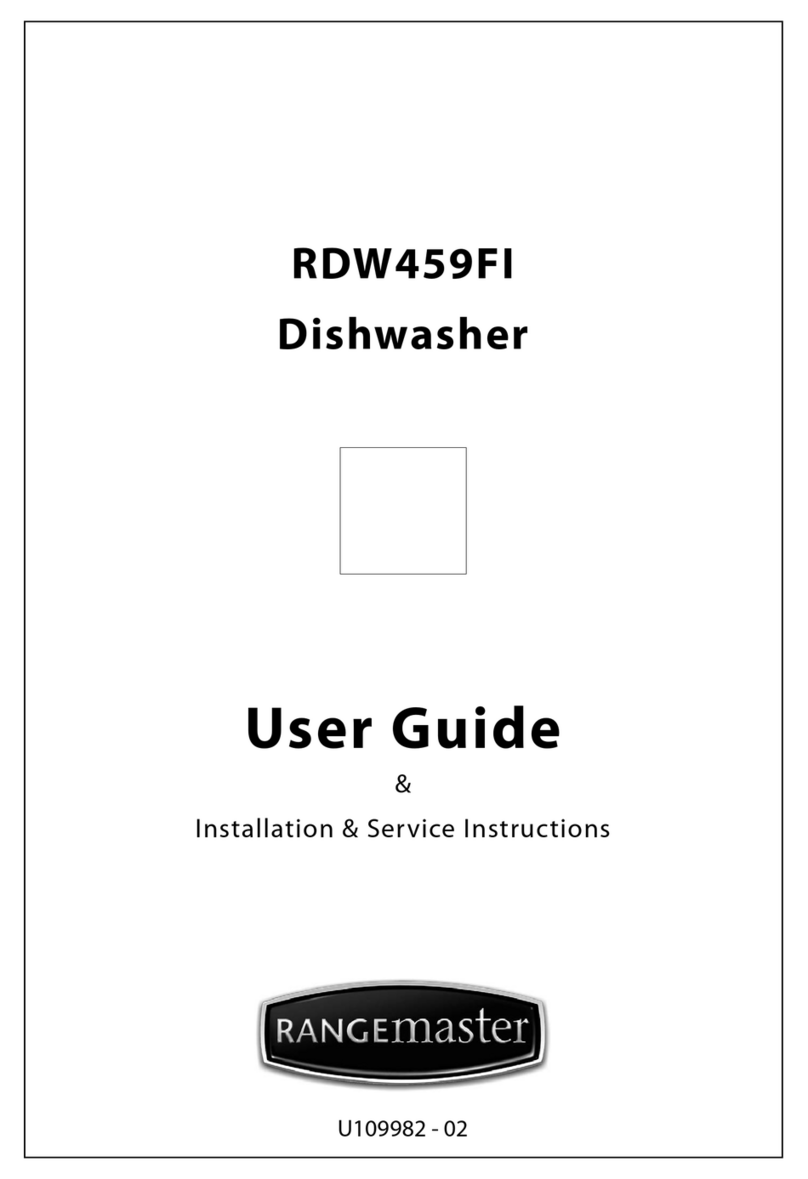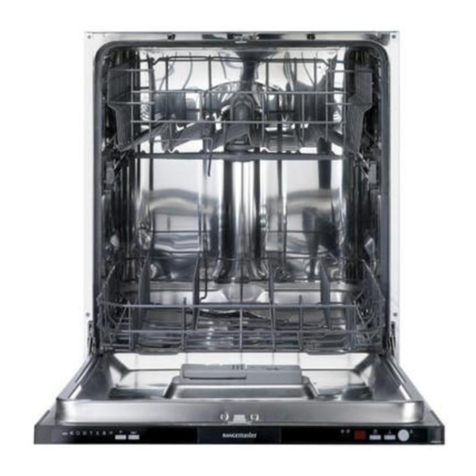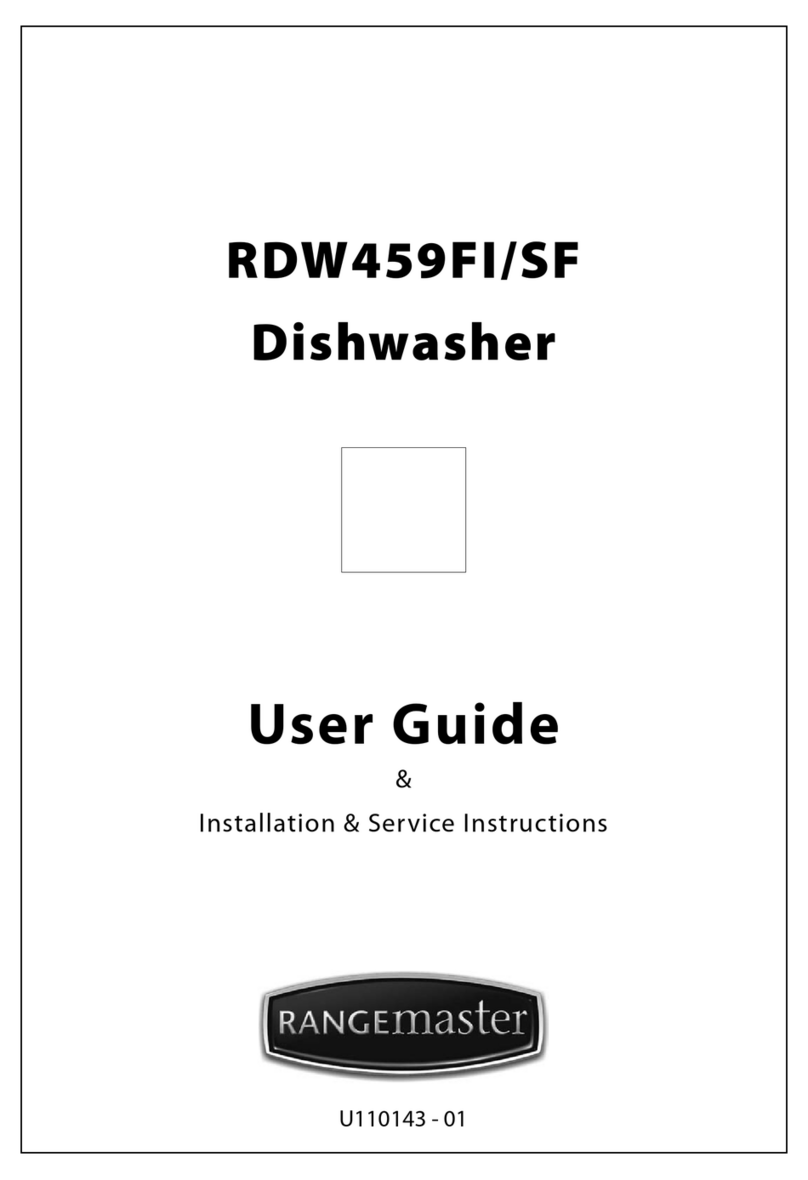
2
• Use only detergent and rinse aid
specifically designed for use in domestic
dishwashers.
• The suitability of plastic items must be
checked before placing them in the
dishwasher.
• DO NOT place items in the dishwasher
that are not suitable for dishwashing.
• DO NOT overfill the dishwasher baskets.
This may result in basket movement and
damage the dishwasher.
• We do not recommend that the door is
opened during operation. However, the
dishwasher door is fitted with a safety
device that stops the dishwasher if the
door is opened during operation. As hot
water may escape the dishwasher, DO NOT
open the door fully until the spray arms
have stopped rotating. Also, be careful of
hot water escape at the base of the door.
• The dishwasher door should not be left
open. Failure to close the dishwasher door
may lead to accidents.
• Sharp ended objects and knives should
be placed into the cutlery basket with the
blade or sharp end facing down toward the
base of the dishwasher.
• Never touch the dishwasher with wet
hands.
• If the dishwasher is not operating properly
or maintenance is required, disconnect
from the power supply.
• This appliance can be used by children
aged from 8 years and above and persons
with reduced physical, sensory or mental
capabilities or lack of experience and
knowledge if they have been given
supervision or instruction concerning
use of the appliance in a safe way and
understand the hazards involved. Children
shall not play with the appliance. Cleaning
and user maintenance shall not be made
by children without supervision.
• Keep detergents out of reach of children.
• When unpacking the dishwasher make
sure that the packaging material is out of
reach of children.
• Keep children away from the dishwasher
when the door is open.
• Keep children away from detergents and
rinse aid.
• DO NOT allow children to play with or start
the dishwasher.
If a Fault Occurs
If the dishwasher malfunctions, turn o the
water supply and disconnect the plug from the
wall socket. If you cannot solve the problem,
contact one of our service centres on the below
numbers:
UK Service Centre Tel: 0844 847 6711.
Republic of Ireland Service Centre Tel:
051 302 333
Only authorized persons should make repairs.
If the supply cord is damaged it must be
replaced by the manufacturer, service agents
or authorized persons.
To maintain the eciency and safety of this
dishwasher we recommend:
• Call only Service Centres authorized by the
manufacturer.
• Always use original spare parts.
Caring for the Environment
Disposing of Your Packaging
Your new dishwasher was protected by suitable
packaging while on its way to you. All of the
materials used are environmentally friendly for
disposal and can be recycled. Please make a
contribution to protecting the environment by
disposing of the packaging appropriately.
